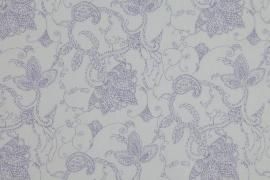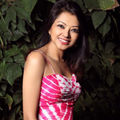Stork Prints unveils new NovaScreen textile printing range

This permits surface printing as demanded for pigments. This specific design of NovaScreen allows for better control of paste transfer.
For example, by applying low shear stress inside the screen, the paste is kept on the textile substrate’s surface. On the other hand it is also possible to do penetrative printing, depending on the given print parameters.
Printing with the new NovaScreen 195-19%
The current NovaScreen 195 has a 16% open area. Increasing the open area has several technological advantages, such as better paste flow and printability. The pitch, which is the dimension of one hole and one dam together, stays the same size at a given mesh count. The hole-size however gets bigger, resulting in a higher open area while the dam width decreases.
This way, the screen’s printability is substantially improved. Less printing pressure is needed to achieve a decent coverage of the substrate. This is especially interesting for pigment printing, because here the printing takes place at the surface. Avoiding penetration leads to a softer hand and a higher colour yield. Therefore the new NovaScreen can even save paste and it is more cost-effective in comparison to lower mesh screens.
Exploring the results with NovaScreen 195-19%
When using NovaScreen 195-19% the most visible and rewarding results are obtained in prints with voluminous substrates and high resolution.
Let’s explore 3 printing techniques: fine-line printing, halftones and reactive printing.
Geometrical and fine-line printing
Geometrical and fine-line printing depend mainly on a screen’s mesh count. The pitch defines the finest line that can theoretically be printed. Any given line will not always be completely straight; in some spots it will be constricted and look more or less curvy/wobbly. The reason for this is that the engraved line is covering spots with more or less holes or bridges.
Halftones
Generating halftone impressions in screen printing depends on rasterisation. A shade impression between full tone and no print is achieved by printing a grid structure with dots instead of a continuous print. The human eye mixes the impression of printed and none-printed areas and a halftone impression is produced.
The quality of rasterisation depends on dot definition and on the finest printable dots. The wider hole diameter allows for a better filling of the engraved grid structure and therefore higher definition of the raster dots.
































-Ltd..jpg?tr=w-120,h-60,c-at_max,cm-pad_resize,bg-ffffff)





.jpg?tr=w-120,h-60,c-at_max,cm-pad_resize,bg-ffffff)
.jpg?tr=w-120,h-60,c-at_max,cm-pad_resize,bg-ffffff)






